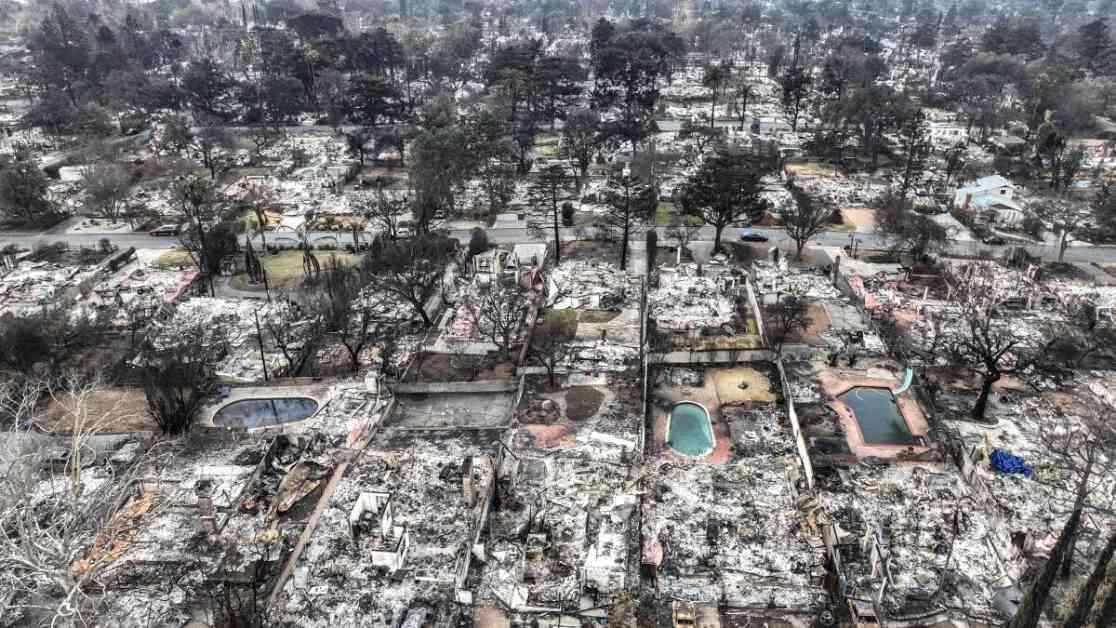Southern California Edison Investigated for Eaton Canyon Power Lines Surge
Southern California Edison recently disclosed a concerning incident involving a momentary increase in electrical current across four power lines over Eaton Canyon, coinciding with the start of the destructive Eaton fire on January 7. The utility company reported this anomaly to state regulators in a filing on Monday. The surge in current occurred shortly after a fault in Edison’s Eagle Rock-Gould line, approximately five miles away from the suspected origin of the fire, which led to the transmission of increased current throughout the company’s system. Despite this spike, Edison officials assured regulators that the current levels remained within the prescribed limits and did not trigger system protection measures on the affected lines.
In response to these developments, an expanded court order was issued to Southern California Edison, requiring the preservation of crucial data and equipment that could provide insights into the cause of the blaze. This directive, resulting from an agreement between the utility company’s attorneys and representatives from the firm Edelson PC, specifically mandates the preservation of towers and transmission lines for various circuits in Eaton Canyon, as well as the Eagle Rock-Gould circuit connected to the reported fault. Ali Moghaddas, an attorney from Edelson PC, emphasized the significance of the temporal proximity between the fault occurrence and the fire ignition, underscoring the need to examine the six-mile stretch between these points.
While Edison initially contested the expansion of the restraining order during a court session, citing concerns of overreach, a subsequent proposal was made to extend the preservation period for equipment tied to the fault for 21 days. Kathleen Dunleavy, a spokesperson for Edison, highlighted that the company’s preliminary investigations did not reveal any damage or faults in the Eaton Canyon area. She clarified that the impact of the fault on the canyon fell within acceptable parameters and reiterated Edison’s commitment to thorough investigation processes.
The California Department of Forestry and Fire Protection (CAL FIRE) received the first reports of the Eaton fire at 6:18 p.m., shortly after the documented fault occurrence. Dunleavy acknowledged the possibility of arcing or sparks resulting from incidents like the reported fault occurring five miles away, attributing these occurrences to the natural operation of Edison’s electric grid. The recent court order and Edison’s disclosures come amidst heightened scrutiny regarding the utility company’s potential role in the fire that has ravaged thousands of acres, destroyed numerous structures, and claimed lives.
Residents living near Eaton Canyon have raised concerns and shared videos capturing early flames near electrical towers, prompting further investigation into the role of these structures. A video released by Edelson PC revealed flashes and potential arcing from a Southern California Edison tower moments before the fire erupted, providing compelling visual evidence for ongoing inquiries. While an official cause of the fire remains undetermined, investigators have focused on an electrical transmission tower in Eaton Canyon, where initial flames were sighted.
As investigations continue and the affected area remains restricted, the full extent of Southern California Edison’s involvement in the Eaton fire remains to be determined. The potential implications of these findings are significant, with billions of dollars at stake as communities grapple with the aftermath of the devastating blaze. Fire investigators are diligently analyzing the area and electrical equipment to establish a clearer understanding of the events leading to the fire’s ignition, ensuring accountability and transparency in the face of this tragedy.


